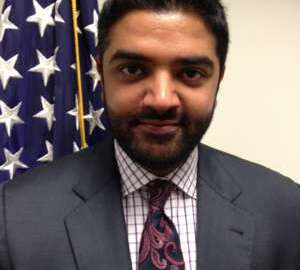
GSA sees $100M IT modernization fund as ‘glass half full’
In the omnibus spending bill passed last month, Congress gave the TMF $100 million for the rest of fiscal 2018, falling short of the $228 million the Trump...
Best listening experience is on Chrome, Firefox or Safari. Subscribe to Federal Drive’s daily audio interviews on Apple Podcasts or PodcastOne.
Federal agencies have gotten the memo from Congress and the White House that they need to modernize their IT systems. But until recently there wasn’t much funding to go around.
Late last year, Congress passed the Modernizing Government Technology (MGT) Act, which set up working capital funds at each agency and a governmentwide Technology Modernization Fund (TMF).
In the omnibus spending bill passed last month, Congress gave the TMF $100 million for the rest of fiscal 2018, falling short of the $228 million the Trump administration asked for in its budget proposal.
Speaking Tuesday at a Meritalk event in Washington, Joanne Collins Smee, the acting director of technology transformation services at the General Services Administration, and the deputy commissioner of the Federal Acquisition Service, said funding for the TMF is a step in the right direction.
“I need to look at this as glass half full, rather than glass half empty. It’s $100 million more than we had last year, so that’s a great thing,” she said.
Collins Smee estimates that the federal government spent more than $90 billion on IT this year. One of the objectives of the MGT Act, and the funds created by it, is to help reduce spending on legacy IT systems.
“The $100 million is focused on activities that are going to be able to make that transformative change for government,” Collins Smee said.
One likely recipient of modernization funds is the Agriculture Department, which has been working with GSA and the Office of American Innovation to stand up five Centers of Excellence — a public-private collaboration aimed at bringing new technology and innovation into government.
Collins Smee, who less than a year ago worked as a general manager in client services at IBM, said government needs to catch up to some of the best practices in industry.
“There was a chart we drew the other day which showed industry and the productivity that you yield from technology is going through the roof. And in the government, we’re not nearly at that trajectory. So part of what we’re doing is bringing in outside assistance to make sure that we’re bringing in industry trends and technology into the government to make the right change for citizens. That’s a key part of what we’re doing,” she said.
In March, GSA awarded contracts to four vendors to work on USDA’s Centers of Excellence. Three of the Centers of Excellence mostly focus on improving customer service online.
Collins Smee said that’s a big challenge for the USDA, which has more than 2,200 bureaus across the country, where farmers knock on doors and sign up for loans.
She says GSA is looking at using robotic process automation, a kind of artificial intelligence, to help streamline all the ways the public asks for government services.
“We are looking for the contacts centers of the future. What are all the channels into an agency that a citizen or a customer has — whether it’s a physical bureau, whether it’s a call line, whether it’s chat vehicle … And we’re looking at how do we actually instrument RPA to handle a lot of those queries, and to handle the first level of the task,” Collins Smee said. “We’re also looking at a significant amount of usage of learning systems, so you can go further up in the stack before you actually have to get a person to help you respond to a farmer’s query.”
Since Congress authorized funds for the TMF, Collins Smee said the board overseeing the fund, chaired by Federal Chief Information Officer Suzette Kent, has received about 20 requests for funding.
In other parts of GSA, the agency is looking at other ways to help agencies put their best foot forward when it comes to online services. Justin Herman, GSA’s emerging citizen technology inter-agency program lead, said GSA is helping agencies move to a “no wrong door” approach — an idea that whether you pick up the phone, visit an agency’s website or interact with an agency’s online chatbot, you’ll find the service that you’re looking for.
In February, USDA launched Farmers.gov, a one-stop shop for customers to find answers to their questions online. It streamlines multiple dot-gov domains. USDA borrowed the idea from the Veterans Affairs Department. In 2015, the VA launched Vets.gov, a “digital front door” that helps veterans navigate more than 1,000 dot-gov websites all in one place.
Herman says the rest of government has a lot of catching up to do before its online services are anywhere near as seamless as what you might see in the private sector.
“The big thing is demolishing the entire model and tyranny of clunky user experience and endless websites in government,” Herman said. “You should just be able to say what you need and it comes to you.”
Herman says he’s used to seeing people get worked up about the idea of using automation in government. But automation doesn’t mean robots will take over the jobs of federal employees.
“At a base level, it’s taking data that often times we already have and making it actionable and digestible for operations in new ways,” Herman said.
Herman said lots of agencies are excited to use tools like AI, but don’t have the infrastructure in place to make it effective.
“We treat cloud as is its own culture and its own area. And then over on another island, there’s data services … We resource these differently, we create barriers around it, and these organizations and these capabilities in some ways can cannibalize each other,” Herman said.
Copyright © 2025 Federal News Network. All rights reserved. This website is not intended for users located within the European Economic Area.
Jory Heckman is a reporter at Federal News Network covering U.S. Postal Service, IRS, big data and technology issues.
Follow @jheckmanWFED





